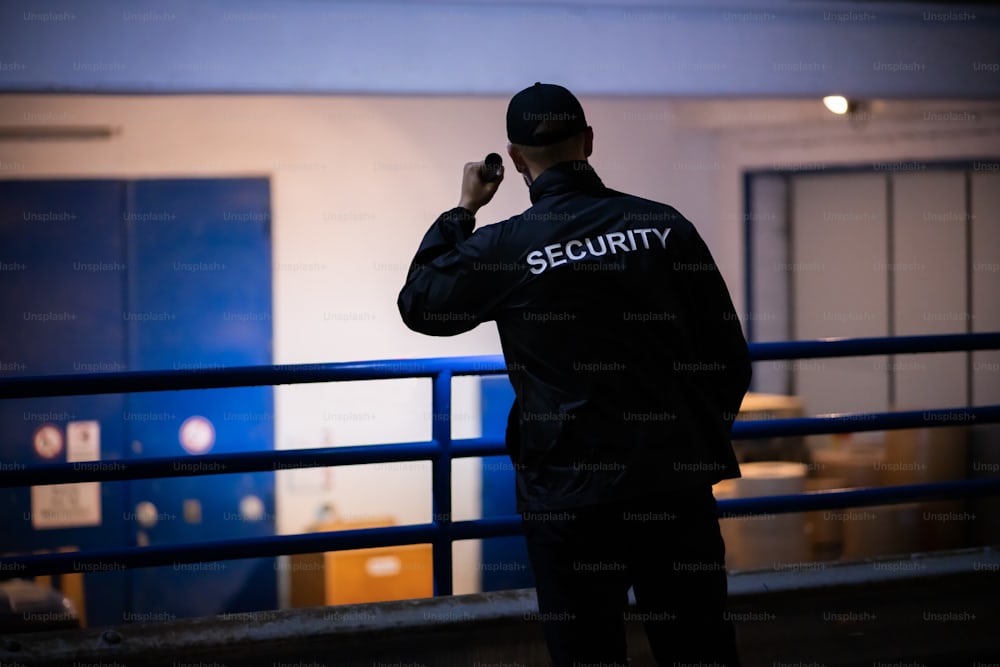It’s 2 a.m. at a downtown Los Angeles high-rise. An armed security guard, Marcus, hears shattering glass near the building’s entrance. He moves toward the sound, flashlight in one hand, the other resting calmly on his holster. A man clutching a crowbar freezes under the beam of light. Instead of drawing his weapon, Marcus uses a firm but measured tone: “Drop it. Let’s talk.” The intruder hesitates, then complies. Ten minutes later, police arrive to find the suspect seated on the curb, unharmed, while Marcus files his report.
This scenario isn’t luck—it’s training in action. In high-stakes security roles, especially for armed professionals, training isn’t just about skill drills; it’s the difference between chaos and control, between tragedy and resolution.
Why Training is the Backbone of Security
Security work hinges on split-second decisions. Untrained guards often rely on instinct, which can lead to panic-driven mistakes. Trained guards, however, operate from a playbook refined by experience and education. Studies show that security teams with regular training reduce on-site violence by up to 60% and legal liabilities by 45%.
Consider a mall security guard disarming a distressed individual versus escalating a confrontation. Or a hospital guard de-escalating a heated family dispute without force. Training equips guards to assess threats, manage emotions, and act with precision—skills that save lives and livelihoods.
Armed Guards: Where Training Becomes a Lifeline
Armed security guards carry a unique burden: the power to protect or harm. Here’s how advanced training elevates their effectiveness:
1. Precision Under Pressure
Firearms proficiency is just the start. Training programs like ASP’s Tactical Decision-Making Under Stress simulate high-pressure scenarios—active shooters, hostage situations, or bystander-filled environments. Guards practice threat identification, cover tactics, and bystander safety. The result? A 2023 FBI study found that trained armed guards resolved 78% of incidents without discharging their weapon, compared to 32% for minimally trained counterparts.
2. De-Escalation as a First Resort
A holstered gun is only as good as the judgment behind it. Programs like Verbal Judo teach guards to defuse tensions through dialogue. In Houston, a trained armed guard convinced a suicidal man to surrender a weapon by empathizing with his struggles—a tactic learned in crisis intervention modules. “Most conflicts don’t require bullets,” says retired police trainer Carla Diaz. “They require patience and words.”
3. Legal and Ethical Clarity
Mishandling a firearm can lead to lawsuits, criminal charges, or public backlash. Training covers use-of-force laws, jurisdictional boundaries, and ethical decision-making. For example, California’s BSIS mandates 18+ hours of legal training for armed guards. This knowledge prevents costly errors, like a San Diego guard who avoided charges by proving his lethal force response aligned with state statutes.
4. Building Public Trust
Visible training fosters confidence. A 2024 survey found that 82% of businesses prefer armed guards with certifications like CPO (Certified Protection Officer) or TASER training. “When clients see our guards practicing trauma first aid or conflict drills, they know we’re professionals,” says a Las Vegas security firm owner.
Case Study: The Mall That Avoided Disaster
In 2023, a Phoenix shopping center faced an armed robbery during peak hours. An armed guard, Alicia, intercepted the suspect near a crowded food court. Using her de-escalation training, she isolated the individual, secured his weapon, and guided shoppers to safety—all without firing a shot. Later, police found the suspect was a mentally ill teen mimicking a video game. “Training taught me to see the human behind the threat,” Alicia said.
The Cost of Cutting Corners
Skimping on training risks lives and reputations. In Miami, an untrained guard’s accidental discharge during a petty theft sparked panic, injuring two bystanders. The ensuing lawsuit bankrupted his employer. Conversely, investing in training pays dividends. For every $1 spent on advanced firearms and de-escalation programs, firms save $4 in legal fees and lost contracts.
The Future of Armed Security: Beyond the Gun
Modern training now blends tech with tradition. Virtual reality simulations let guards rehearse active shooter responses in digital replicas of their actual worksites. Biomechanics coaches refine their posture and breathing to steady aim under stress. Others learn crowd psychology to spot threats in packed venues.
Yet, the core lesson remains: a gun is a last resort. As Marcus, the guard from our opening story, puts it: “My best weapon isn’t loaded—it’s my ability to think before I act.”
Conclusion: Training as the Ultimate Force Multiplier
In security, a well-trained armed guard isn’t just a deterrent—they’re a diplomat, a first responder, and a strategist rolled into one. Their value lies not in the firearm they carry, but in the wisdom to wield it judiciously.
For businesses and communities alike, investing in training isn’t optional. It’s the price of peace in an unpredictable world. Because when seconds count, training is what turns armed guards into guardians.
Interested in certified training programs? Organizations like ASIS International and the National Tactical Officers Association offer courses blending tactical skill with crisis empathy.



